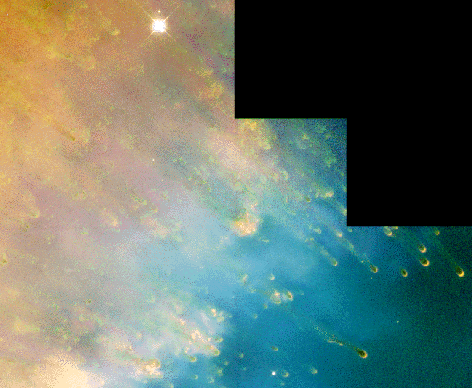
|
Credit & Copyright: R. O'Dell and K. Handron
(Rice University),
NASA
Explanation:
While exploring the inner edge of the
Helix Nebula with the Hubble Space
Telescope's
Wide Field Planetary Camera 2, astronomers were able
to produce this striking image - rich in details of an exotic environment.
This planetary nebula, created near
the final phase of a sun-like star's life,
is composed of tenuous shells of gas ejected by the hot central
star. The atoms of gas, stripped of electrons by ultraviolet radiation
from the central star, radiate light at characteristic
energies allowing specific chemical elements to be identified.
In this image, emission from nitrogen is represented as red,
hydrogen emission as green, and oxygen as blue.
The inner edge of the nebula (the direction to the central star)
is toward the bottom right. Clearly visible close to the
inner edge are finger shaped "cometary knots".
|
January February March April May June July August September October November December |
| ||||||||||||||||||||||||||||||||||||||||||||||||
NASA Web Site Statements, Warnings, and Disclaimers
NASA Official: Jay Norris. Specific rights apply.
A service of: LHEA at NASA / GSFC
& Michigan Tech. U.
Based on Astronomy Picture
Of the Day
